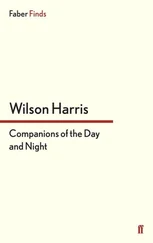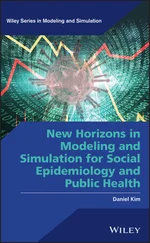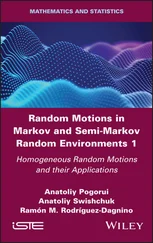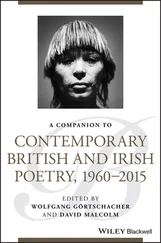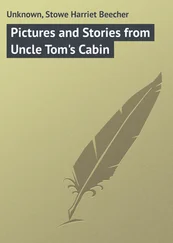A Companion to Motion Pictures and Public Value
Здесь есть возможность читать онлайн «A Companion to Motion Pictures and Public Value» — ознакомительный отрывок электронной книги совершенно бесплатно, а после прочтения отрывка купить полную версию. В некоторых случаях можно слушать аудио, скачать через торрент в формате fb2 и присутствует краткое содержание. Жанр: unrecognised, на английском языке. Описание произведения, (предисловие) а так же отзывы посетителей доступны на портале библиотеки ЛибКат.
- Название:A Companion to Motion Pictures and Public Value
- Автор:
- Жанр:
- Год:неизвестен
- ISBN:нет данных
- Рейтинг книги:3 / 5. Голосов: 1
-
Избранное:Добавить в избранное
- Отзывы:
-
Ваша оценка:
- 60
- 1
- 2
- 3
- 4
- 5
A Companion to Motion Pictures and Public Value: краткое содержание, описание и аннотация
Предлагаем к чтению аннотацию, описание, краткое содержание или предисловие (зависит от того, что написал сам автор книги «A Companion to Motion Pictures and Public Value»). Если вы не нашли необходимую информацию о книге — напишите в комментариях, мы постараемся отыскать её.
A Companion to Motion Pictures and Public Value
Companion
A Companion to Motion Pictures and Public Value
A Companion to Motion Pictures and Public Value — читать онлайн ознакомительный отрывок
Ниже представлен текст книги, разбитый по страницам. Система сохранения места последней прочитанной страницы, позволяет с удобством читать онлайн бесплатно книгу «A Companion to Motion Pictures and Public Value», без необходимости каждый раз заново искать на чём Вы остановились. Поставьте закладку, и сможете в любой момент перейти на страницу, на которой закончили чтение.
Интервал:
Закладка:
9 Carlson, Allen. 1977. “On the Possibility of Quantifying Scenic Beauty.” Landscape Planning 4: 131–72. . 1979a. “Appreciation and the Natural Environment.” Journal of Aesthetics and Art Criticism 37: 267–76.
10 . 1979b. “Formal Qualities and the Natural Environment.” Journal of Aesthetic Education 13: 99–114.
11 . 2019. “Environmental Aesthetics.” In The Stanford Encyclopedia of Philosophy, edited by Edward N. Zalta. https://plato.stanford.edu/archives/sum2019/entries/environmental-aesthetics.
12 Carlson, Allen, and Arnold Berleant. 2004. “Introduction: The Aesthetics of Nature.” In The Aesthetics of Natural Environments. Peterborough, Ontario: Broadview Press.
13 Daniel, Terry. 2001. “Whither Scenic Beauty? Visual Landscape Quality Assessment in the 21st Century.” Landscape and Urban Planning 54: 276–81.
14 Danto, Arthur. 2004. “The End of Art.” In The Philosophical Disenfranchisement of Art. New York: Columbia University Press.
15 Eaton, Marcia. 1998. “Fact and Fiction in the Aesthetic Appreciation of Nature.” The Journal of Aesthetics and Art Criticism 56: 149–56.
16 Friday, Jonathan. 1999. “Looking at Nature Through Photographs.” Journal of Aesthetic Education 33: 25–35.
17 Helphand, Kenneth. 1986. “Landscape Films.” Landscape Journal 5: 1–8.
18 Heyd, Thomas. 2001. “Aesthetic Appreciation and the Many Stories About Nature.” British Journal of Aesthetics 41: 125–37.
19 Hjort, Mette. 2016. “What Does it Mean to be an Ecological Filmmaker? Knut Erik Jensens’s Work as Eco-Auteur.” Projections 10: 104–24.
20 Hunt, John Dixon. 1994. “Picturesque Mirrors and the Ruins of the Past.” In Gardens and the Picturesque: Studies in the History of Landscape Architecture. Cambridge, MA: MIT Press.
21 Hussey, Christopher. 1927. The Picturesque: Studies in a Point of View. London: G.P. Putnam’s Sons.
22 King, William. 1992. “Scruton and Reasons for Looking at Photographs.” British Journal of Aesthetics 32: 258–65.
23 Levinson, Jerrold. 2005. “Erotic Art and Pornographic Pictures.” Philosophy and Literature 29: 228–40.
24 Lopes, Dominic McIver. 2003. “The Aesthetics of Photographic Transparency.” Mind 447: 433–48.
25 Lukinbeal, Chris. 2005. “Cinematic Landscapes.” Journal of Cultural Geography 23: 13–22.
26 MacDonald, Scott. 2017. “Ruminating on the Ideologies of Nature Film.” In Philosophy of Documentary Film, edited by David LaRocca. Lanham, MD: Lexington Books.
27 Matthes, Erich. 2020. “Portraits of the Landscape.” In Portraits and Philosophy, edited by Hans Maes. New York: Routledge.
28 Millet, Lydia. 2004. “Die Baby Harp Seal!” In Naked: Writers Uncover the Way We Live on Earth, edited by Susan Zakin. New York: Four Walls Eight Windows.
29 Mitman, Gregg. 1999. Reel Nature: America’s Romance with Wildlife on Film. Cambridge, MA: Harvard University Press.
30 Moore, Ronald. 2008. Natural Beauty: A Theory of Aesthetics beyond the Arts. Peterborough: Broadview Press.
31 Parsons, Glenn. 2008. Aesthetics & Nature. Continuum Press.
32 . 2015. “Why Should We Save Nature’s Hidden Gems?” Journal of Applied Philosophy 32: 98–110.
33 Plantinga, Carl. 2015. “What a Documentary Is, After All.” The Journal of Aesthetics and Art Criticism 63: 105–17.
34 Scruton, Roger. 1981. “Photography and Representation.” Critical Inquiry 7: 577–603.
35 Semczyszyn, Nola. 2013a. “Public Aquariums and Marine Aesthetics.” Contemporary Aesthetics 11.
36 . 2013b. “Visual Media in Environmental Aesthetics.” Unpublished ms.
37 Sitney, P. Adams. 1993. “Landscape in the Cinema: The Rhythms of the World and the Camera.” In Landscape, Natural Beauty and the Arts, edited by Salim Kemal and Ivan Gaskell. Cambridge: Cambridge University Press.
38 Walton, Kendall. 1984. “Transparent Pictures: On the Nature of Photographic Realism.” Critical Inquiry 11: 246–77.
39 Welling, Bart. 2009. “Ecoporn: On the Limits of Visualizing the Nonhuman.” In Ecosee: Image, Rhetoric, Nature, edited by Sidney Dobrin and Sean Morey. Albany, NY: SUNY Press.
Notes
1 1An exception is Hjort (2016), who considers connections between filmmaking and recent views in nature aesthetics. Note that by “nature film” I have in mind film where nature is the central subject, and not simply employed as a dramatic backdrop, or a device used to further the story, set a mood, or convey things about particular characters or events (on these other cinematic uses of landscape, see Helphand 1986; Lukinbeal 2005). So conceived, nature film includes the traditional nature documentary, but also the work of ecologically oriented filmmakers, such as Knut Eric Jensen (see Hjort 2016), as well as avant-garde works of filmmakers such as Stan Brakhage (for an overview, see Sitney 1993).
2 2One example, Allen Carlson, is discussed below.
3 3Tellingly, Carl Plantinga illustrates the point that documentary film may be deceptive with the specific example of nature film (2015, 113).
4 4Discussion of the general idea of mediated appreciation is rare in the literature; two exceptions are Semczyszyn (1999). Whereas the latter is concerned with photographs specifically, Semczyszyn’s discussion considers a range of different representations. I draw heavily on her treatment here; on Friday’s views, see n15 below.
5 5This will remind some of Kendall Walton’s infamous claim that photographs are transparent, in the sense that we literally see, when we look at a photograph, the subject of the photograph (1984). However, the claim I am concerned with—the claim that I can appreciate Grant’s looks by examining this representation of him—is distinct from Walton’s transparency claim. The transparency claim entails appreciative aptness, but appreciative aptness does not entail transparency. Say you deny Walton’s claim that we see Cary Grant when we look at a photograph of him: perhaps we see merely a likeness of Grant in the photograph. Nonetheless, you may still grant that the photograph is appreciatively apt for Grant: by looking at this likeness or representation, we manage to come away with a valid appreciation of Grant’s features.
6 6Elsewhere Carlson writes sympathetically about what he calls “nature art” (photography is not included), but in much the same fashion as Heyd: “This kind of access to environments through the arts can heavily influence how we experience and thus how we value them…” (Carlson and Berleant 2004, 25).
7 7Berleant refers here only to traditional art that, involving notions like disinterestedness, requires a kind of “distance” between the appreciator and the art object.
8 8Regarding this image, Waugh remarked: “I understood this shoot had to be all about shape, patterns and abstract ideas”.
9 9Interestingly, most philosophical discussion of photography has tended in the opposite direction, worrying that appreciation of photographs is always appreciation of the subject of the photographic image, rather than the image itself, and is therefore inartistic (Scruton 1981).
10 10Expressionist painters went even further in this direction: Franz Marc, for instance, represented animals and the landscape in fantastical colors, carefully chosen for what he took to be their specific emotional qualities.
11 11On the Picturesque, see Hussey (1927); for a short overview of the Claude glass, see Hunt (1994).
12 12For a critical look at the use of photograph measurement as a way of quantifying the aesthetic value of landscapes, see Carlson (1977). A recent perspective on scenic quality assessment in general is Daniel (2001).
13 13On the importance of considering objects as well as environments see Moore (2008, 113) and Budd (2002, 135–6).
Читать дальшеИнтервал:
Закладка:
Похожие книги на «A Companion to Motion Pictures and Public Value»
Представляем Вашему вниманию похожие книги на «A Companion to Motion Pictures and Public Value» списком для выбора. Мы отобрали схожую по названию и смыслу литературу в надежде предоставить читателям больше вариантов отыскать новые, интересные, ещё непрочитанные произведения.
Обсуждение, отзывы о книге «A Companion to Motion Pictures and Public Value» и просто собственные мнения читателей. Оставьте ваши комментарии, напишите, что Вы думаете о произведении, его смысле или главных героях. Укажите что конкретно понравилось, а что нет, и почему Вы так считаете.

